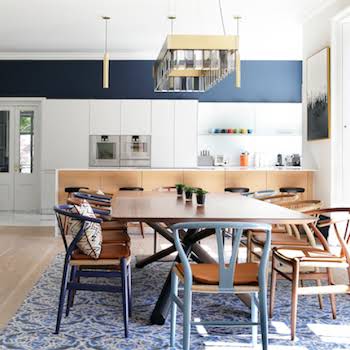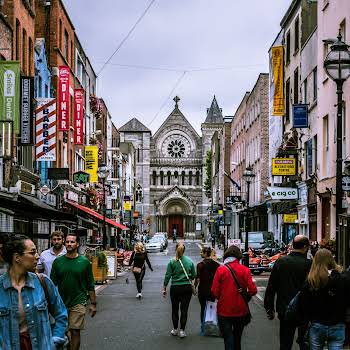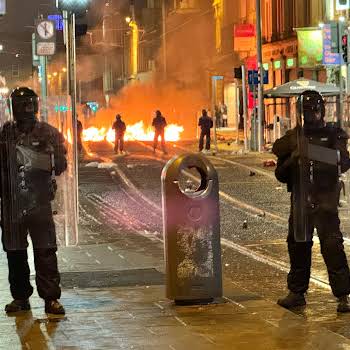Wheelchair accessibility is the only upside to Dublin’s ongoing gentrification
By Louise Bruton
26th Sep 2018
26th Sep 2018
When I walk around Dublin, I feel a sense of detachment to the city I’ve called home for 11 years. My relationship with Dublin first changed when I went from using crutches to being a full-time wheelchair user. All of the places I used to love going to – normally grungy spots in basements or overheated dance floors on the top floor of grotty pubs – just weren’t accessible to me anymore. In my mind’s map, I drew a black mark over them and with the evident boom in the tourism industry here, that black mark is growing.
When I go through town now, I see shops, cafes, pubs and restaurants that have been altered to accommodate the temporary resident, cutting out full-time residents from their business plan entirely. Our city centre is swallowing up the areas that were full of quirky clothes shops, record stores and hodge-podge cafes and is replacing them with restaurants that aren’t intended to be visited more than once, shops that sell garish green jumpers with DUBLIN emblazoned across them and inauthentic “authentic” Irish pubs that borrow more from Darby O’Gill than real life. Shoehorning in attractions that appeal to tourists, necessary facilities are not being provided or amended for those of us that call Dublin home.
If I want to go from George’s Street to Liffey Street, I have to go to either O’Connell Bridge or Grattan Bridge – skipping Millennium Bridge and the Ha’Penny Bridge, which have steps going up either side – to avoid the cobbles.
Since using the wheelchair, the entire scape of Temple Bar has been a no-go area for me. A key tourist destination, cobblestones line the roads, the paths too narrow and uneven and the streets are cluttered with bin bags and sandwich boards. If I want to go from George’s Street to Liffey Street, I have to go to either O’Connell Bridge or Grattan Bridge – skipping Millennium Bridge and the Ha’Penny Bridge, which has steps going up either side – to avoid the cobbles.
Related: ASOS is designing for wheelchair users. It’s called accessible fashion. Look it up.
Consumed by brands
While there are loose plans in motion to refurbish Temple Bar Square, making it a more open and accessible place, there’s a real quick-fix vibe to Dublin now. In a bid to welcome tourists to Dublin, shopfronts have temporary and disposable facades, ready to be changed if the rent increases and a new tenant steps in to fill the void. Hotels and aparthotels are replacing the music venues we once loved, immediately eliminating a future for any open spaces, low-rent community centres or affordable housing. The way that Dublin is going, we are running out of spaces to live, socialise or to just sit and watch the world go by. Instead of consuming brands, we are being consumed by them.
The new apartment blocks, restaurants, cafes and pubs that pop up in the residential areas that traditionally have a lower rent bracket are all accessible for disabled people because their design falls under Part M of the very sexy Building Regulations.
Forever placing the blame on anti-social behaviour, local councils are removing public benches and seating areas, ushering us into franchise coffee spots that are more reliable for the phone charging spots than their brews if we want a sit-down. The removal of public benches is another strike against access for people who can’t walk long distances and just need a moment to catch their breath.
The most recent fallen solider of public seating is the marble bench that used to reside outside the steps of The Powerscourt Centre. At the most, it could fit about four people but its absence increases the ‘Go! Go! Go!’ mentality that’s seeping into our world, a mentality that equates the cost of a sit down to a cup of bad coffee. Feeling less like the Dublin we used to know, we are being pushed out in order to find other places to set up shop and home and with that brings that awful thing called gentrification.
Building Regulations
Among the terrible things gentrification represents – class, wealth, privilege, the loss of local history and misplaced ownership – I have one tiny flag to wave in support of it and that flag is access. So many of the city centre’s buildings are protected, meaning that only new buildings must fully comply with the Building Regulations. The new apartment blocks, restaurants, cafes and pubs that pop up in the residential areas that traditionally have a lower rent bracket are all accessible for disabled people because their design falls under Part M of the very sexy Building Regulations. Wide doors, large bathrooms, low counters and ramped, if not totally flat, entrances… Those are the words to make the wheelchair user in your life flutter their eyelashes and swoon but they come with the cost of culture and history in the area that has been bulldozed.
Where our capital repeatedly fails to accommodate everyone by cramming apartments into tiny spaces for extortionate amounts of money and chucking out small businesses and replacing them with global brands, the city becomes physically, financially or socially inaccessible for locals. Every inch of Dublin is now a potential business venture rather than a community. Never too far from a Starbucks or a vaping shop, the character is being drained from our home so that it’s more familiar to those who are just passing by instead of improving the streets and buildings for the city’s residents. As our city becomes someone else’s playground, we just have to watch on and hope that we can salvage something from this mess.























